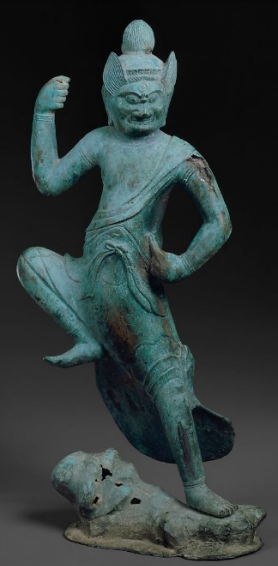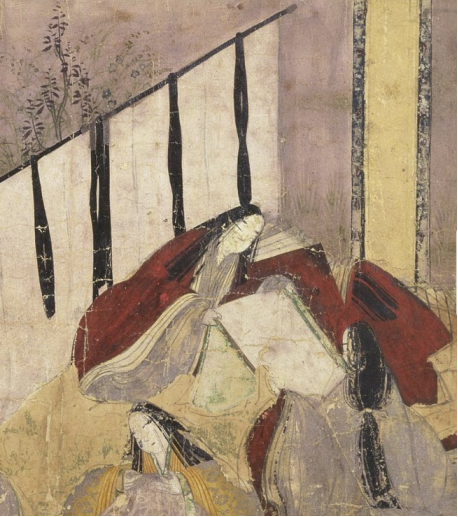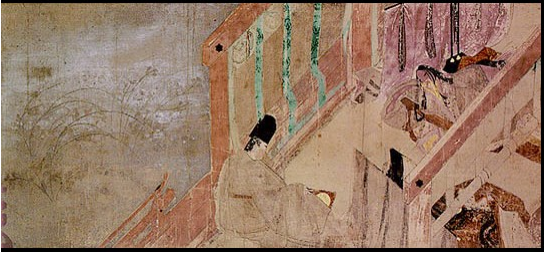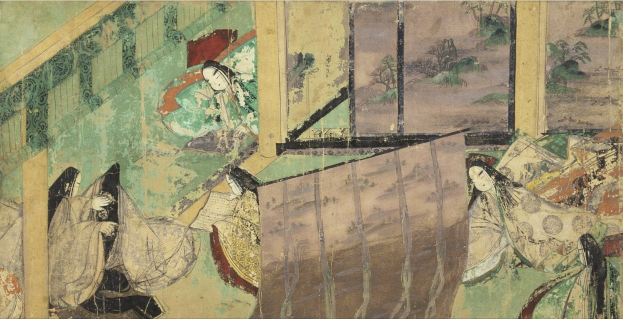9.3: An Isolated Aristocracy
- Page ID
- 135140
\( \newcommand{\vecs}[1]{\overset { \scriptstyle \rightharpoonup} {\mathbf{#1}} } \)
\( \newcommand{\vecd}[1]{\overset{-\!-\!\rightharpoonup}{\vphantom{a}\smash {#1}}} \)
\( \newcommand{\id}{\mathrm{id}}\) \( \newcommand{\Span}{\mathrm{span}}\)
( \newcommand{\kernel}{\mathrm{null}\,}\) \( \newcommand{\range}{\mathrm{range}\,}\)
\( \newcommand{\RealPart}{\mathrm{Re}}\) \( \newcommand{\ImaginaryPart}{\mathrm{Im}}\)
\( \newcommand{\Argument}{\mathrm{Arg}}\) \( \newcommand{\norm}[1]{\| #1 \|}\)
\( \newcommand{\inner}[2]{\langle #1, #2 \rangle}\)
\( \newcommand{\Span}{\mathrm{span}}\)
\( \newcommand{\id}{\mathrm{id}}\)
\( \newcommand{\Span}{\mathrm{span}}\)
\( \newcommand{\kernel}{\mathrm{null}\,}\)
\( \newcommand{\range}{\mathrm{range}\,}\)
\( \newcommand{\RealPart}{\mathrm{Re}}\)
\( \newcommand{\ImaginaryPart}{\mathrm{Im}}\)
\( \newcommand{\Argument}{\mathrm{Arg}}\)
\( \newcommand{\norm}[1]{\| #1 \|}\)
\( \newcommand{\inner}[2]{\langle #1, #2 \rangle}\)
\( \newcommand{\Span}{\mathrm{span}}\) \( \newcommand{\AA}{\unicode[.8,0]{x212B}}\)
\( \newcommand{\vectorA}[1]{\vec{#1}} % arrow\)
\( \newcommand{\vectorAt}[1]{\vec{\text{#1}}} % arrow\)
\( \newcommand{\vectorB}[1]{\overset { \scriptstyle \rightharpoonup} {\mathbf{#1}} } \)
\( \newcommand{\vectorC}[1]{\textbf{#1}} \)
\( \newcommand{\vectorD}[1]{\overrightarrow{#1}} \)
\( \newcommand{\vectorDt}[1]{\overrightarrow{\text{#1}}} \)
\( \newcommand{\vectE}[1]{\overset{-\!-\!\rightharpoonup}{\vphantom{a}\smash{\mathbf {#1}}}} \)
\( \newcommand{\vecs}[1]{\overset { \scriptstyle \rightharpoonup} {\mathbf{#1}} } \)
\( \newcommand{\vecd}[1]{\overset{-\!-\!\rightharpoonup}{\vphantom{a}\smash {#1}}} \)
\(\newcommand{\avec}{\mathbf a}\) \(\newcommand{\bvec}{\mathbf b}\) \(\newcommand{\cvec}{\mathbf c}\) \(\newcommand{\dvec}{\mathbf d}\) \(\newcommand{\dtil}{\widetilde{\mathbf d}}\) \(\newcommand{\evec}{\mathbf e}\) \(\newcommand{\fvec}{\mathbf f}\) \(\newcommand{\nvec}{\mathbf n}\) \(\newcommand{\pvec}{\mathbf p}\) \(\newcommand{\qvec}{\mathbf q}\) \(\newcommand{\svec}{\mathbf s}\) \(\newcommand{\tvec}{\mathbf t}\) \(\newcommand{\uvec}{\mathbf u}\) \(\newcommand{\vvec}{\mathbf v}\) \(\newcommand{\wvec}{\mathbf w}\) \(\newcommand{\xvec}{\mathbf x}\) \(\newcommand{\yvec}{\mathbf y}\) \(\newcommand{\zvec}{\mathbf z}\) \(\newcommand{\rvec}{\mathbf r}\) \(\newcommand{\mvec}{\mathbf m}\) \(\newcommand{\zerovec}{\mathbf 0}\) \(\newcommand{\onevec}{\mathbf 1}\) \(\newcommand{\real}{\mathbb R}\) \(\newcommand{\twovec}[2]{\left[\begin{array}{r}#1 \\ #2 \end{array}\right]}\) \(\newcommand{\ctwovec}[2]{\left[\begin{array}{c}#1 \\ #2 \end{array}\right]}\) \(\newcommand{\threevec}[3]{\left[\begin{array}{r}#1 \\ #2 \\ #3 \end{array}\right]}\) \(\newcommand{\cthreevec}[3]{\left[\begin{array}{c}#1 \\ #2 \\ #3 \end{array}\right]}\) \(\newcommand{\fourvec}[4]{\left[\begin{array}{r}#1 \\ #2 \\ #3 \\ #4 \end{array}\right]}\) \(\newcommand{\cfourvec}[4]{\left[\begin{array}{c}#1 \\ #2 \\ #3 \\ #4 \end{array}\right]}\) \(\newcommand{\fivevec}[5]{\left[\begin{array}{r}#1 \\ #2 \\ #3 \\ #4 \\ #5 \\ \end{array}\right]}\) \(\newcommand{\cfivevec}[5]{\left[\begin{array}{c}#1 \\ #2 \\ #3 \\ #4 \\ #5 \\ \end{array}\right]}\) \(\newcommand{\mattwo}[4]{\left[\begin{array}{rr}#1 \amp #2 \\ #3 \amp #4 \\ \end{array}\right]}\) \(\newcommand{\laspan}[1]{\text{Span}\{#1\}}\) \(\newcommand{\bcal}{\cal B}\) \(\newcommand{\ccal}{\cal C}\) \(\newcommand{\scal}{\cal S}\) \(\newcommand{\wcal}{\cal W}\) \(\newcommand{\ecal}{\cal E}\) \(\newcommand{\coords}[2]{\left\{#1\right\}_{#2}}\) \(\newcommand{\gray}[1]{\color{gray}{#1}}\) \(\newcommand{\lgray}[1]{\color{lightgray}{#1}}\) \(\newcommand{\rank}{\operatorname{rank}}\) \(\newcommand{\row}{\text{Row}}\) \(\newcommand{\col}{\text{Col}}\) \(\renewcommand{\row}{\text{Row}}\) \(\newcommand{\nul}{\text{Nul}}\) \(\newcommand{\var}{\text{Var}}\) \(\newcommand{\corr}{\text{corr}}\) \(\newcommand{\len}[1]{\left|#1\right|}\) \(\newcommand{\bbar}{\overline{\bvec}}\) \(\newcommand{\bhat}{\widehat{\bvec}}\) \(\newcommand{\bperp}{\bvec^\perp}\) \(\newcommand{\xhat}{\widehat{\xvec}}\) \(\newcommand{\vhat}{\widehat{\vvec}}\) \(\newcommand{\uhat}{\widehat{\uvec}}\) \(\newcommand{\what}{\widehat{\wvec}}\) \(\newcommand{\Sighat}{\widehat{\Sigma}}\) \(\newcommand{\lt}{<}\) \(\newcommand{\gt}{>}\) \(\newcommand{\amp}{&}\) \(\definecolor{fillinmathshade}{gray}{0.9}\)Japanese nobles were few, and closely related, as in Silla – perhaps even more so. Out of a population of about 5-6 million (estimates vary, and population may have dropped around 950), court aristocrats comprised only about 1/10th of 1%, that is about 5,000 people in all at any one time. That small group dominated rank, wealth, government office, and the written record, and they married only with one another. Everyone was related to everyone else, especially given the practice of polygyny, a strong matrilineal tradition, and plentiful love affairs. Factions shifted frequently, but violence was rare. Disputes were settled by giving or taking away rank, so that the bureaucratic system as a set of ranks and offices was not challenged but valued and supported. About the worst thing that could happen to a high-ranking aristocrat was that he or she would be exiled, which only increased the sense that ultimately, conflicts had to be settled within the court.
As among the true-bone elite of Silla, these 5,000 people considered themselves better than everyone else by virtue of their birth. But the true-bone Kims shared a surname with immigrants and lower-ranking kinfolk. The Japanese aristocracy, though it included many who had originally come from the peninsula, did not care to remember that. Their sense of superiority was justified by their Shinto godly ancestry; by the Buddhist notion of karma, which they took to mean that since they were living the good life they must have deserved it; and by the Han philosophical idea that the imperial bureaucratic order expressed and supported the order of the cosmos, of heaven and earth. What was, was right; and any doubts could be funneled into a toothless general view drawn from Buddhism that everything was transient.
The Hei’an elite seem narrow, even in descriptions by scholars who love their culture.5 Missions to the mainland bringing back books, paintings, statues, poems, music, dance, and ways to garden and build and govern and lay out cities slowed with the An Lushan rebellion of 755 and ceased entirely after 894. No more Japanese monks went to study in China, as Ennin had done just at the end of the Tang period; a few merchants still came to the Japanese court in Hei’an, selling books, ceramics, and textiles for gold, but no-one wanted to talk to them. Hei’an aristocrats kept reciting the poetry of Tang poet Bai Juyi, but they learned no new mainland poetry. They wrote their own poetry, kept diaries, and wrote novels about themselves. (The most famous is Murasaki Shikibu’s Tale of Genji, about Prince Genji and his many loves.) They cut themselves off from the world outside the archipelago.
The Good People of Hei’an City
In fact, they tried to live entirely within Hei’an city (Kyoto). Hei’an was laid out in a grid like the Tang capital, but whereas Chang’an stimulated the economy, bringing in trade from as far away as Persia, Hei’an ate up the wood and other resources of the country without stimulating prosperity in return. Roads were neglected. There were horses, and the Members of the Imperial Guard could ride on horseback, even though they performed no real military function. But many other members of the aristocracy did not even know how to mount a horse. Instead, they travelled, both within the capital and outside, in very high ox-carts, designed more for show than for comfort. A village ten miles out of the capital, in the Tale of Genji, is considered absurdly far away, practically unreachable. To go from Kyoto to the area of today’s Tokyo took several months and was very dangerous and uncomfortable. Why would one leave?
Under the bureaucratic system, governors and their staffs went out to administer Kyushu, Shikoku, and the southern half of Honshu. But these were hardship posts assigned to losers in the factional fighting at court. Exile from the capital the worst punishment: not only because of the danger of travel, but primarily because there could be no cultured existence in such “undesirable surroundings,” no life worth living away from the “good people.” One daughter explained her father’s posting as governor as a result of his bad karma from a previous existence. A governor would often send a member of his household as a deputy, so he could stay in the capital. The worst thing you could say about someone was that he or she was “countrified;” one governor’s daughter raised near today’s Tokyo wrote resignedly that the people of the capital, because “I was brought up in a remote part of the world… would regard me as hopelessly outlandish.” Not only did the nobility cut themselves off from knowledge of the rest of Asia, but they knew almost nothing of Japan.
If the capital nobility looked down on ranked nobles posted outside the capital, you can imagine how they felt about farmers and workers. Because the popular Tang poet Bai Juyi had written about poor people, they were an acceptable literary subject, but still the literature of the Hei’an barely refers to such people, except in passing as incomprehensible figures who are hardly human – part of the mechanics of life, like carts and oxen. Working people were dismissed in one work as “uninteresting, useless, and unintelligible.” Diarist Sei Shonagon once described some workmen she had watched eating:
The way that carpenters eat is really odd. When the roof of the eastern wing was being built, there were several carpenters squatting in a row and having their meal; I went out to have a look. The moment the food was brought, they fell on the soup bowls and gulped down the contents. Then they pushed the bowls aside and polished off all the vegetables. I was wondering whether they were going to leave their rice; a second later there wasn’t a grain left in their bowls. They all behaved in exactly the same way and I suppose this must be the nature of carpenters. I should not call it a very charming one.
The nobility seem to have been so shut into themselves that they could not imagine that a working man might be hungry at noon. Certainly the idea that such people might love their families or suffer when someone died would not occur to the nobles. Their world was socially closed in, as well as cut off from the outside, limited to “good people” of the upper ranks.
Social Rank and Political Rank
Moreover, the aristocracy hedged themselves about with rules, rituals, and regulations of many kinds. To begin with the rules about personal and family rank: one’s rank determined many facets of one’s life. First there was the royal family itself, calculated patrilineally. Then Ranks 1, 2, and 3 were the “High Court Nobles” and were mainly junior branches of the royal family and descendants of those who had held clan titles before the Taika policy changes of 646, carried out in the 660s. 1, 2, and 3 were subdivided into Junior and Senior. Ranks 4 & 5 (each subdivided into 4) were the second layer, who still received their individual appointments from the emperor personally, and who were mainly the descendants of lesser clans from the area around the capital in the old days, along with some who had immigrated to Japan a couple of centuries earlier. Below them were Ranks 6-10 and their subdivisions, for a total of 30 ranks, mostly minor clans from the provinces. All these nobles shared some privileges: they were not required to do labor for the state or serve in the army. They could not be beaten if they committed a crime, and served lesser sentences than commoners. But within the nobility, these ranks, and family tradition, and the support of matrilineal relatives and other connections, determined which official posts in the bureaucracy a man was eligible for and, since government grants were the source of wealth, also determined his wealth. The top five ranks were granted rice land to live from – about 200 acres for Senior First Rank, who would have the job of Prime Minister, down to about 20 acres for Junior Fifth.
As across East Asia in this age of aristocracy, inherited rank and office rank set many details of life: what one could wear, in color, fabric, and style, including styles of hats and fans; what kind of carriage one could have, with how many outriders; the style and materials of one’s house, down to the height of the gate post. These details were what concerned the elite, and they obsessively followed who held what rank and whether they were overstepping their privileges. The children of the top five ranks automatically gained a place in the rank system when they came of age; in the top three ranks grandchildren also automatically got rank. The other noble children must have attached themselves to the noble houses as personal servants, ladies’ maids, and so on, for such people, too, had to be well-educated and refined.
The emperor could move a person up or down in rank, and you could be shifted from one position to another, but all such changes were the stuff of factional struggle and extensive maneuvering. Promotion depended on family connections, especially with the Fujiwara family who were the mothers and fathers-in-laws of nearly all the emperors. Without high-ranking and active family members, one had no chance of moving from the sixth rank into a higher rank. We do read of men who took the Confucian message to heart and worked hard for the government. But even more than in Tang, the interest of most of these nobility focused on the promotion of their kin and the demotion of their rivals, on marriage alliances and on the competitions in the arts that helped to make a person’s reputation and perhaps open up the way to a promotion.
Elite Culture
The regulations of rank were only one set of rules the aristocracy had to follow. They were bound by a calendar of Shinto ceremonies, and Buddhist ceremonies, each with its requirements, traditions, and pleasures. Much of the energy of government went into managing these rituals and ceremonies, and so it was the nobility who ran them and served as the audience as well. There were rules about how each had to be done and who had to do what. Moreover, the nobility were bound by a number of what we would consider superstitions. There were ideas about yin-yang, the alternation of opposing forces in the universe, and about fengshui or geomancy, and astrology, omens, and divination which all affected how people carried out their daily lives.
For the Hei’an nobility, these layered beliefs evolved into an elaborate set of taboos to avoid disaster. There were deities who moved around the points of the compass according to a complicated schedule, and when a deity was in a certain direction, you were not to travel through it. You might be able to take a long way around, or you might have to stay and wait until the time had passed. A deity called Doku spent spring in each house’s oven, summers at each gate, autumns in each well, and winters in each courtyard. So it would be disastrous to do repairs to whatever part of the house he was in – even if the well was not working in autumn, you had to wait to repair it. Or you could move temporarily to another house and do a set of rituals to “convert” the unlucky part or direction of the house into something else. Any planned construction or any celebration had to take careful account of where the various deities were and what directions were forbidden to whom when.

Based on divinations involving the Chinese calendar, whole days were designated as taboo days when one should just stay indoors and do nothing. There was a whole miscellany of rules to avoid trouble: fingernails could only be cut on Ox-days, toenails only on Tiger-day. Bathing could take place only every five days and only if the fifth day was reckoned to be auspicious. There were other complicated rules involving avoiding “pollution” – contact with death or birth or other kinds of impurities.

In addition to these taboos, and the rules of rank, Hei’an noble life was structured by the rules of taste. Every aspect of life was understood as an expression of beauty and good taste. Men and women mixed their own perfumes, dyed their own clothes, designed their own gardens, and wrote or performed their own music and dances, so that every aspect of life expressed your own sense of style and taste. Not even the content of one’s poetry but one’s handwriting was seen as expressing the essence of one’s being, and everyone was always judging everyone else on that basis. Within the elaborate and shifting codes of tradition and fashion, choosing a paper sprinkled with silver instead of gold for an excuse or a love-letter could be a disastrous error depending on the precise circumstances. Fastening a note to a pine-branch instead of a cherry branch, or writing in a style wrong for the occasion might wreck a love affair or destroy one’s reputation for tastefulness and elegance. A slip would be discussed with disdain by everyone.
Hei’an houses were open to all weather. The garden was the center of interest of a house, and sometimes contained expensive simalcra of places they would never travel to: one nobleman in the Sixth Ward had a small lake in his garden with an artificial sand-bar planted with windwarped pine trees such as one finds along the shore. The seasons were experienced through the changes in the garden, and the changing of leaves and blossoms was obsessively followed, with the pride of ownership as well as the sensitivity of the romantic.
The mansions were mainly one-story buildings, often in a U-shape with the garden as the center. The middle of the U was the main hall, where the master lived, and the flanking halls housed his children, relatives, secondary consorts, high-ranking retainers, etc. The principal wife might live with her own family, in a mansion they provided for her, or in a building facing her husband’s across the garden. Long verandas ran along the sides of the houses. Rooms were protected from the outside by hanging curtains and screens. Inside, each hall was one large space, divided as needed into smaller rooms by screens. The rooms were practically bare, with the very minimum of furniture: straw mats and cushions moved around as needed on bare wooden floors, a chest or shelf for storage, a charcoal brazier to provide a little warmth, and movable screens. Music, chess (go), reading and writing all took place in that room, sitting on the floor on the very spot, perhaps, in which one would sleep that night. A space serving longterm as a bedroom there hold a raised black platform, 2 feet high and nine feet square, covered with straw mats and cushions and surrounded by curtains. There were no solid walls.


There was no dining room or other space where the whole family gathered. Family members lived largely isolated from one another. Brothers and sisters might grow up in the same household and literally never see one another. Women in particular were not supposed to be seen and talked with guests only from behind a frame with heavy curtains, called the “screen of state.” And so the main impression nobles gained of the people of their own class outside their immediate circle came from gossip, not from face-to-face communication. A noble person was never unattended: ladies or gentleman in waiting were never farther away than on the other side of a screen. The lack of privacy only adds to the feeling of claustrophobia. Every action was observed, every word heard, every letter read, by the people of the household.
In The World of the Shining Prince, Ivan Morris writes that an informed Westerner who was asked to list the outstanding aspects of traditional Japan might include Noh and kabuki drama, haiku poems, ukiyo-e color prints, samisen music, the tea ceremony, flower arranging, miniature landscapes; samurai with two swords and a “Bushido” ethic of loyalty and sacrifice; geisha courtesans; Zen Buddhism; suicide commonly permitted and even admired in the name of honor or love; houses with straw matting and alcoves to display seasonal paintings; large communal baths; and a diet that included raw fish and soy sauce. Not one of these existed in the Hei’an world. All came about in the great change from the classical or antique to the medieval period, as those terms are used in Japanese history.


